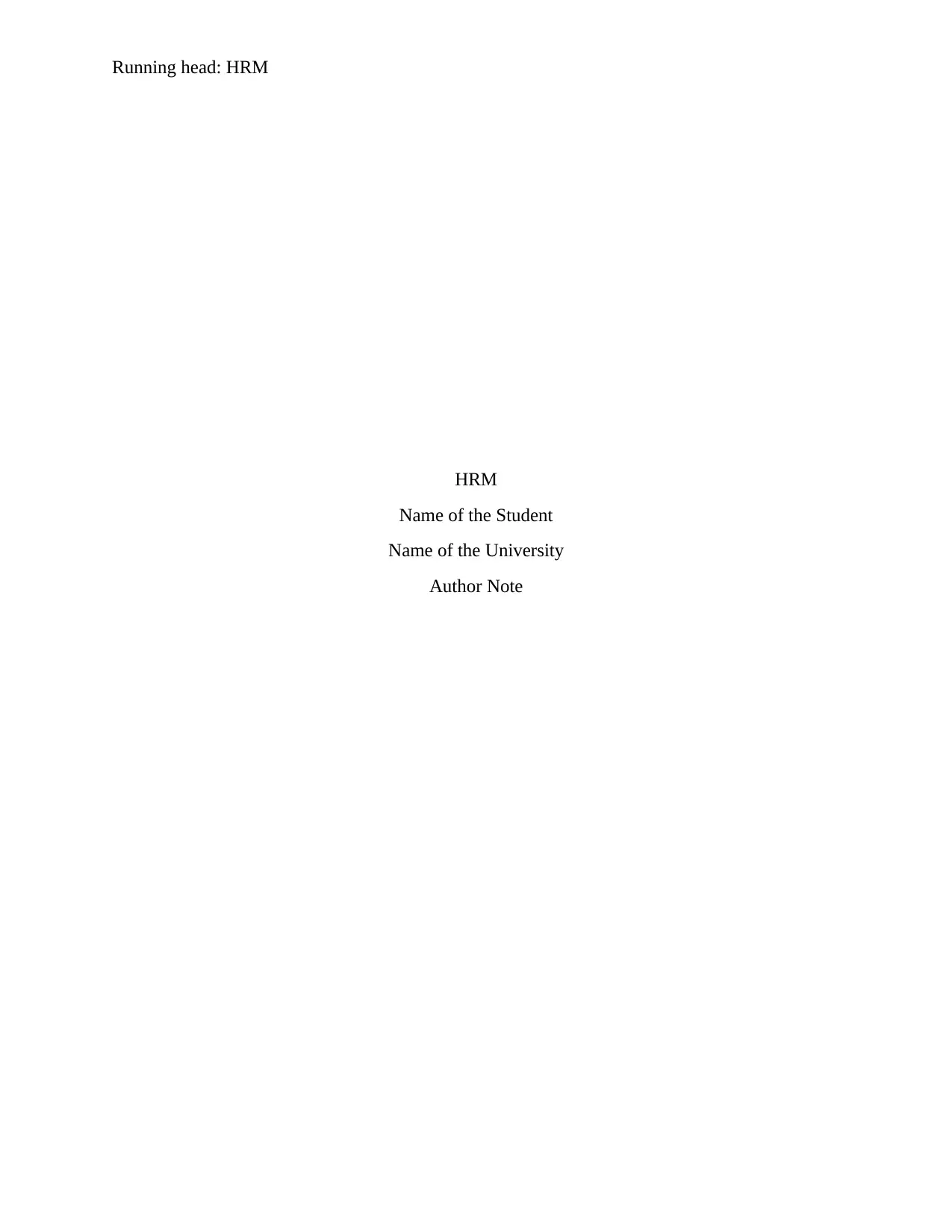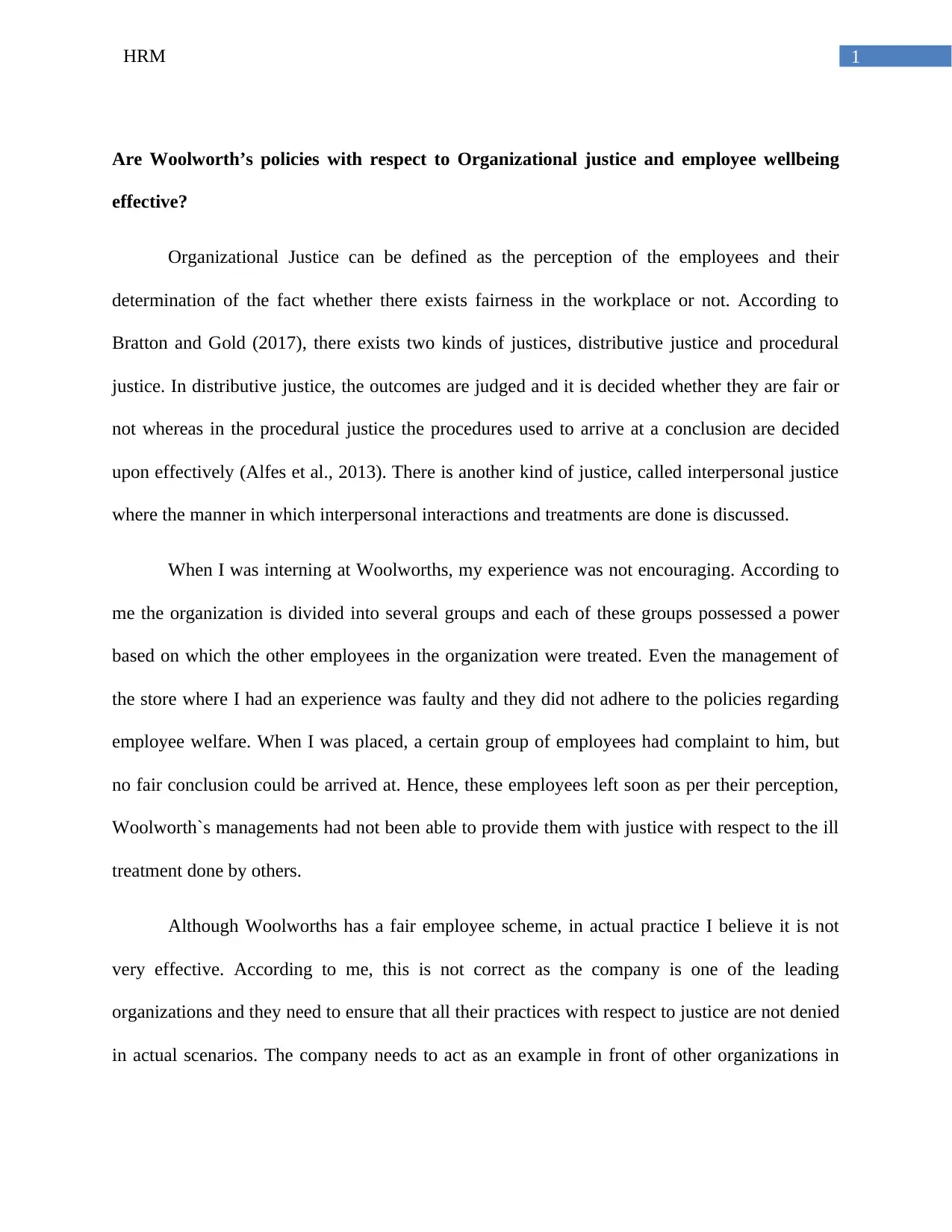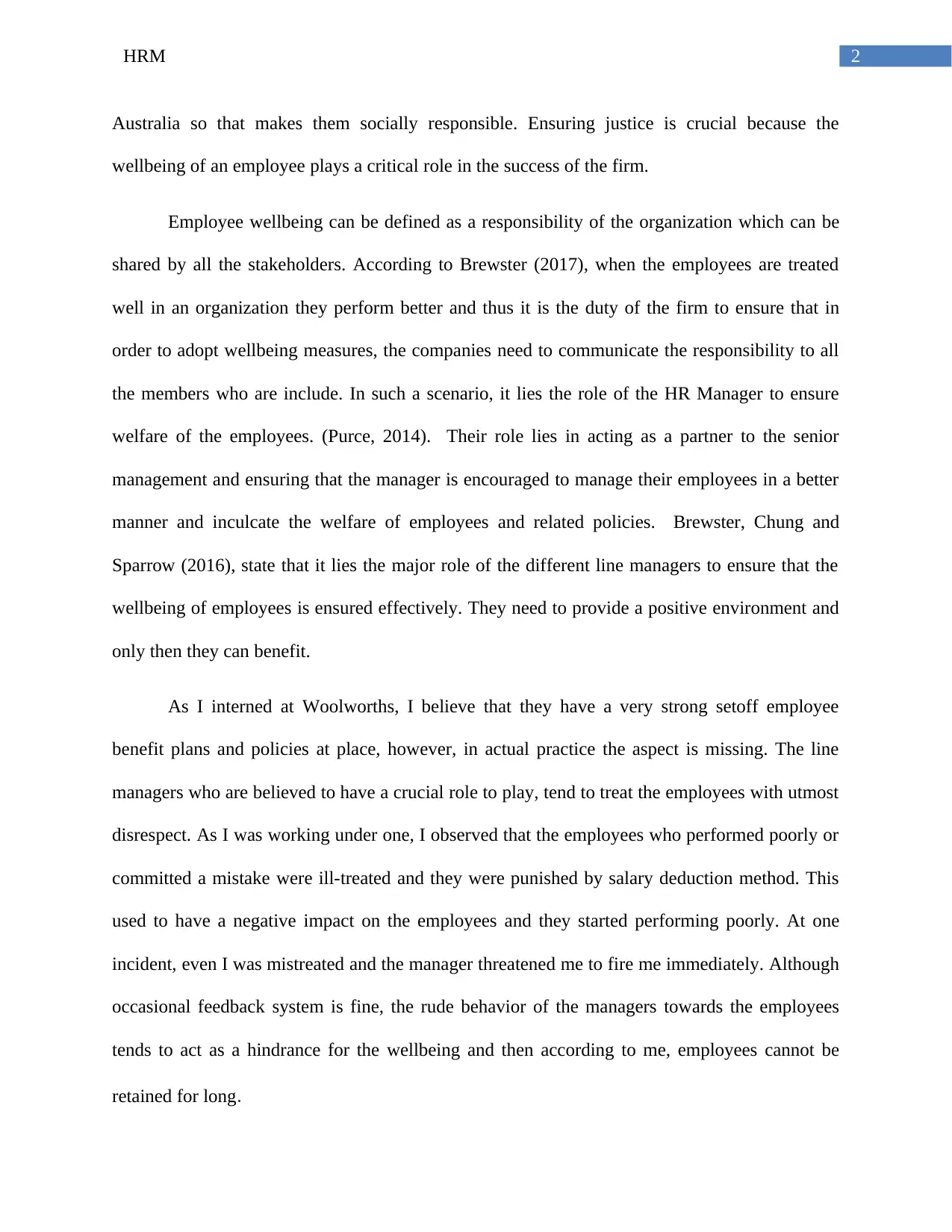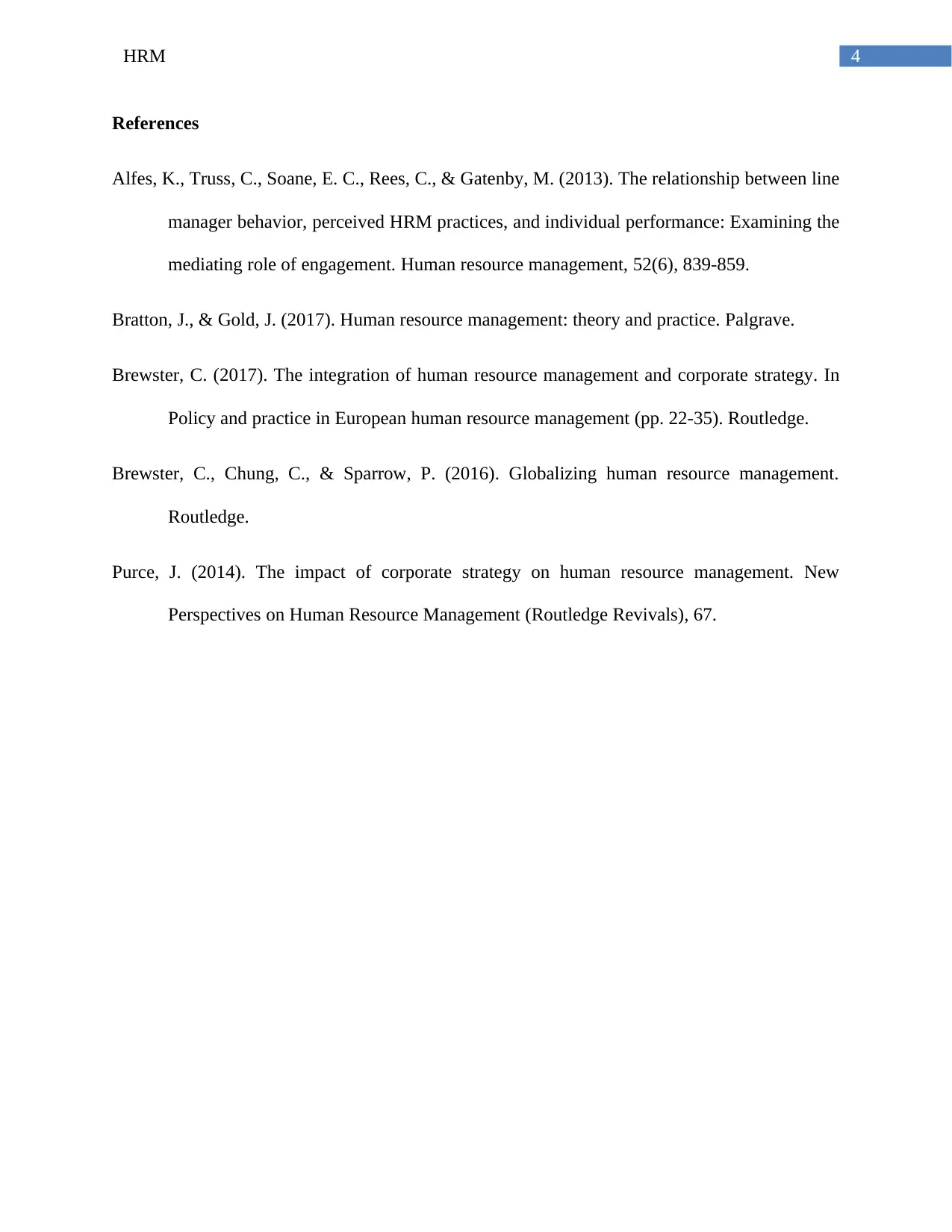HRM552 Assessment: Woolworths' Organizational Justice and Wellbeing
VerifiedAdded on 2023/06/11
|5
|890
|310
Essay
AI Summary
This essay critically evaluates the effectiveness of Woolworths' policies regarding organizational justice and employee wellbeing, drawing from the author's internship experience. It defines organizational justice, including distributive, procedural, and interpersonal justice, and argues that while Woolworths has fair employee schemes on paper, their practical implementation is lacking. The author recounts instances of unequal treatment and ineffective management, leading to employee dissatisfaction and turnover. The essay also discusses employee wellbeing as a crucial factor for organizational success, emphasizing the role of HR managers and line managers in fostering a positive work environment. Despite Woolworths having employee benefit plans, the author observed disrespectful treatment by line managers, negatively impacting employee morale and performance. The essay concludes that Woolworths needs to improve its practical application of justice and wellbeing policies to ensure a positive and productive work environment, with Desklib offering additional resources for students studying similar topics.
1 out of 5












![[object Object]](/_next/static/media/star-bottom.7253800d.svg)